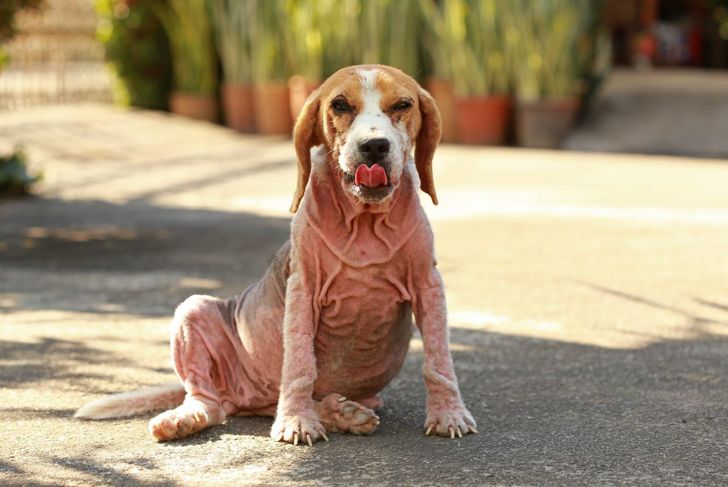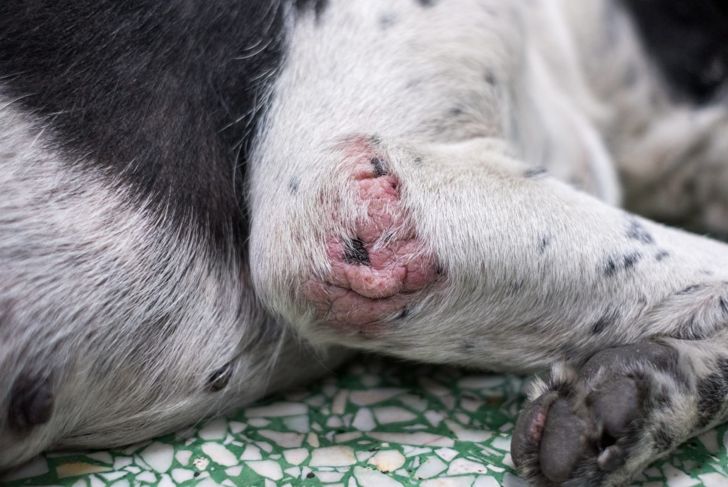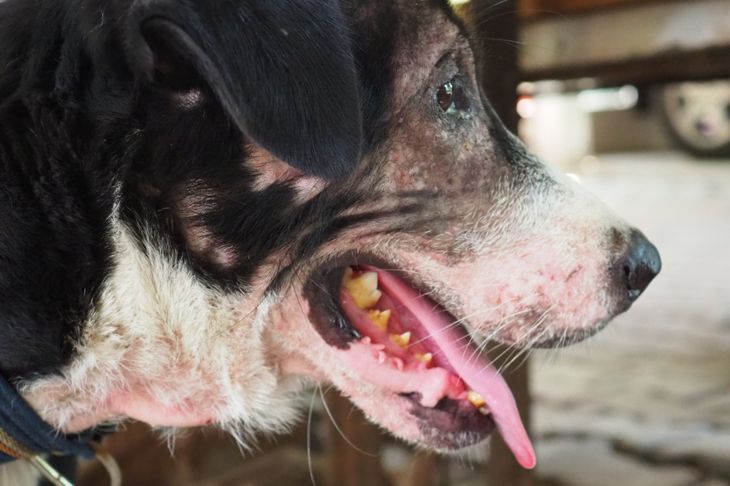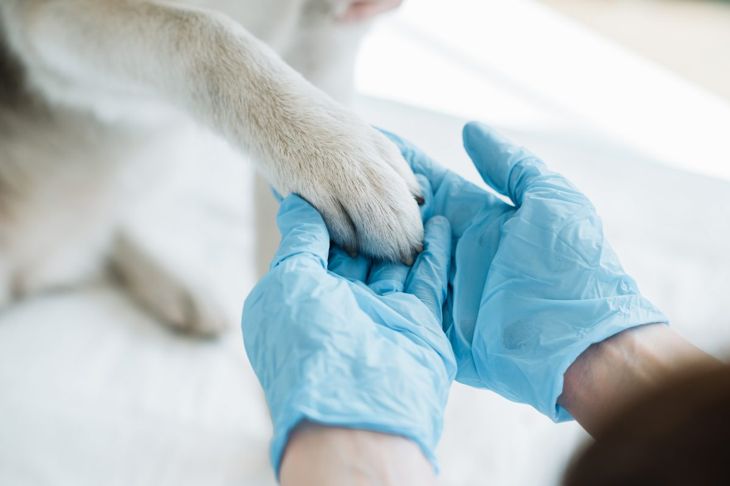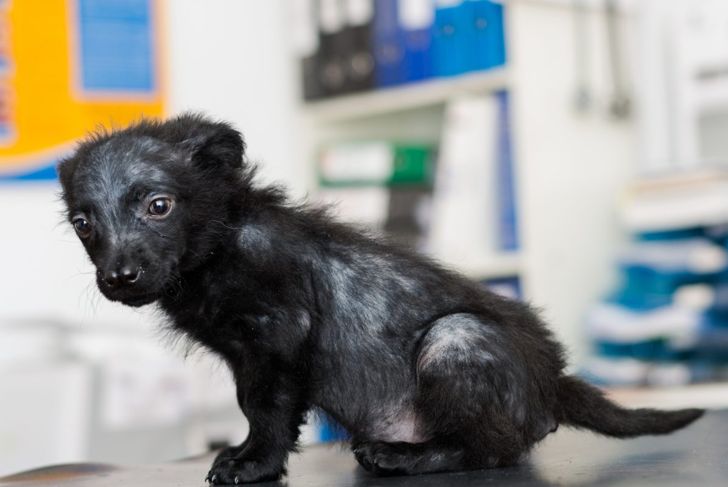Mange is a highly contagious skin disease that can impact your dog's overall health and appearance. The word “mange” comes from the old French word "mangeue" which means itch. And itching is the first telling symptom. Without treatment, mange can lead to permanent hair loss, scarring and illness, and even death. Mange is highly contagious between dogs, and it can also infect your other pets and even human household members. If you suspect your dog has this parasitic skin disease, it's critical to get immediate treatment from a veterinarian. Your vet must evaluate your dog's symptoms to determine the type of mange so he or she can determine the best course of treatment.
What exactly is mange?
Mange is a contagious parasitic disease that's caused by two types of microscopic mites. Symptoms of mange include hair loss, severe itching, and scabbing around the ears, feet, tail base, and other body parts.
What is sarcoptic mange?
Sarcoptic mange is caused by a parasitic mite called Sarcoptes scabiei. Sarcoptic mange is also called scabies, an affliction that humans can get. The scabies mites burrow under the skin where they lay their eggs. The eggs hatch in about three weeks and begin to feed off your pet.
What is demodetic mange?
When an infection occurs, Demodex mites live in your dog’s hair follicles and oil glands. In small numbers, they're harmless (and you'll never notice them), but an overgrowth of Demodex mites can cause the disease symptoms called mange. This type is, fortunately, less difficult to treat than the sarcoptic variety. Demodex mites can also be responsible for some other skin diseases, including pyoderma and folliculitis.
Wildlife can spread mange to your dog
If wildlife, such as foxes or coyotes, lives nearby, it’s possible for them to spread the other type of mange to your dog — sarcoptic mange. Other species that can carry this type of mange include bears, rabbits, squirrels, and raccoons. Often, local authorities will advise residents if mange-infected wildlife has been spotted.
What are the symptoms of sarcoptic mange?
Besides intense itching, sarcoptic mange has other symptoms including hair loss, redness, a rash, thick yellowish skin crusts, and bacterial or yeast infections. Infected dogs may also appear depressed and lethargic. Advanced cases can include enlargement of the lymph nodes and a gaunt, emaciated appearance. If left untreated, sarcoptic mange can lead to blindness and even death.
What to expect at the vets' office
As soon your vet suspects mange, she will do a skin scraping and perhaps pull a few hairs from your dog’s coat. They'll then examine the samples to determine the type of pest that’s infecting your best friend. Your vet will also thoroughly examine the rest of your pet’s body to ensure that there are no other rashes from yeast or bacteria. Once the type of mange is determined, your vet will provide you with a regimen of home care.
Treating mange
Sarcoptic mange is more difficult to treat than demodectic mange because the mites and their eggs are burrowed under your dog’s skin. Your vet will likely prescribe an oral medication as well as a topical one (medication applied to the skin). If your dog has a secondary bacterial infection, the vet may also prescribe a systemic antibiotic. Demodectic mange, on the other hand, is usually treated by topical medication and medicated shampoos only. Sometimes a vet may recommend “dipping” a dog diagnosed with demodectic mange. This is much like a flea dip, with the animal's entire body bathed in a medicated liquid.
Are certain breeds more prone to mange?
Mange is an equal-opportunity infection. However, puppies younger than a year are at higher risk of mange because their immune systems are immature. Elderly dogs, as well as dogs with weakened immune systems, are also prone to developing mange.
How long does it take for mange to go away?
With immediate treatment, mange should resolve in about two to three weeks. If there are complications, like secondary bacterial or yeast infections, it may take a little longer. Ask your vet for her guestimate for a full recovery.
My dog is recovering from mange. How should I clean my house?
First, collect all your dog’s washable bedding, toys, coats, thunder-jackets, and anything else she uses or likes to lay on (your comforter, maybe?). Wash everything in the hottest water possible with detergent. Set your drier to its highest level to dry your freshly washed items. Put anything that’s not washable in a sealable plastic bag. Close the bag securely and leave it sealed for three to seven days — the longer, the better. (You may want to use duct tape or mailing tape to close any gaps where air might enter.) This will suffocate the mites. You’ll want to thoroughly vacuum your upholstery and carpets, as well. Clean your pet’s kennel and crate with a solution of one part bleach to ten parts water, and use this solution for your dog’s grooming equipment, too. And check with your vet: she may have a sheet of instructions for you or a section on her office's website with full, more detailed instructions.

 Home
Home Health
Health Diet & Nutrition
Diet & Nutrition Living Well
Living Well More
More